January 7th, 2025
8minute read
The Battle of Monte Cassino began on January 17, 1944.
This four-month battle became a meat grinder, resulting in 55,000 Allied and 20,000 German casualties.
On January 20th, the U.S. Armys 36th Division attacked the center attempting to push across the Gari River.
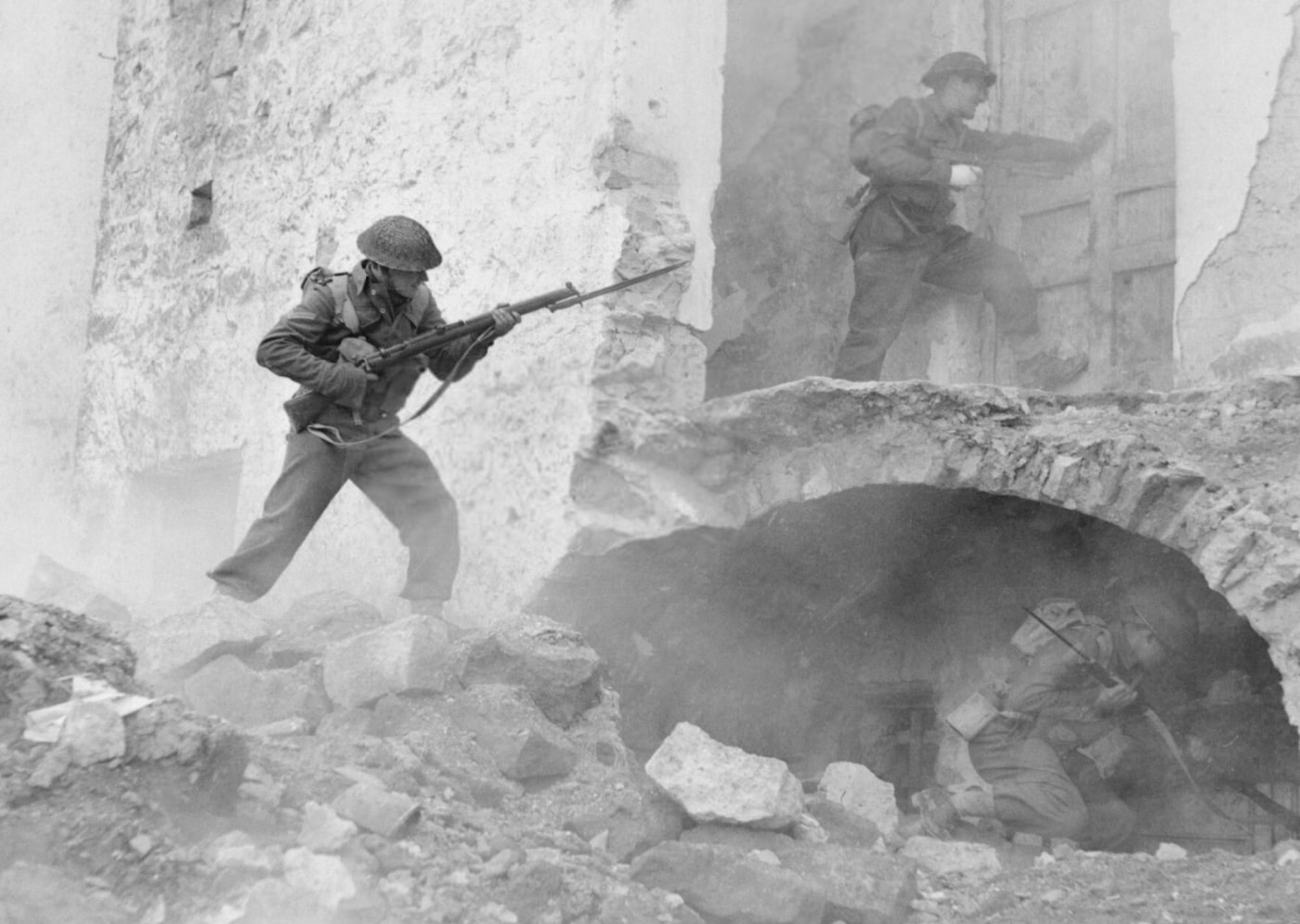
British infantry clearing buildings during the Battle of Monte Cassino in World War II.
Although the American troops fought hard, they suffered at least 1,600 casualties in just 48 hours.
It is believed less than 40 Germans were killed during the same time.
Two more assaults were launched with similar results.
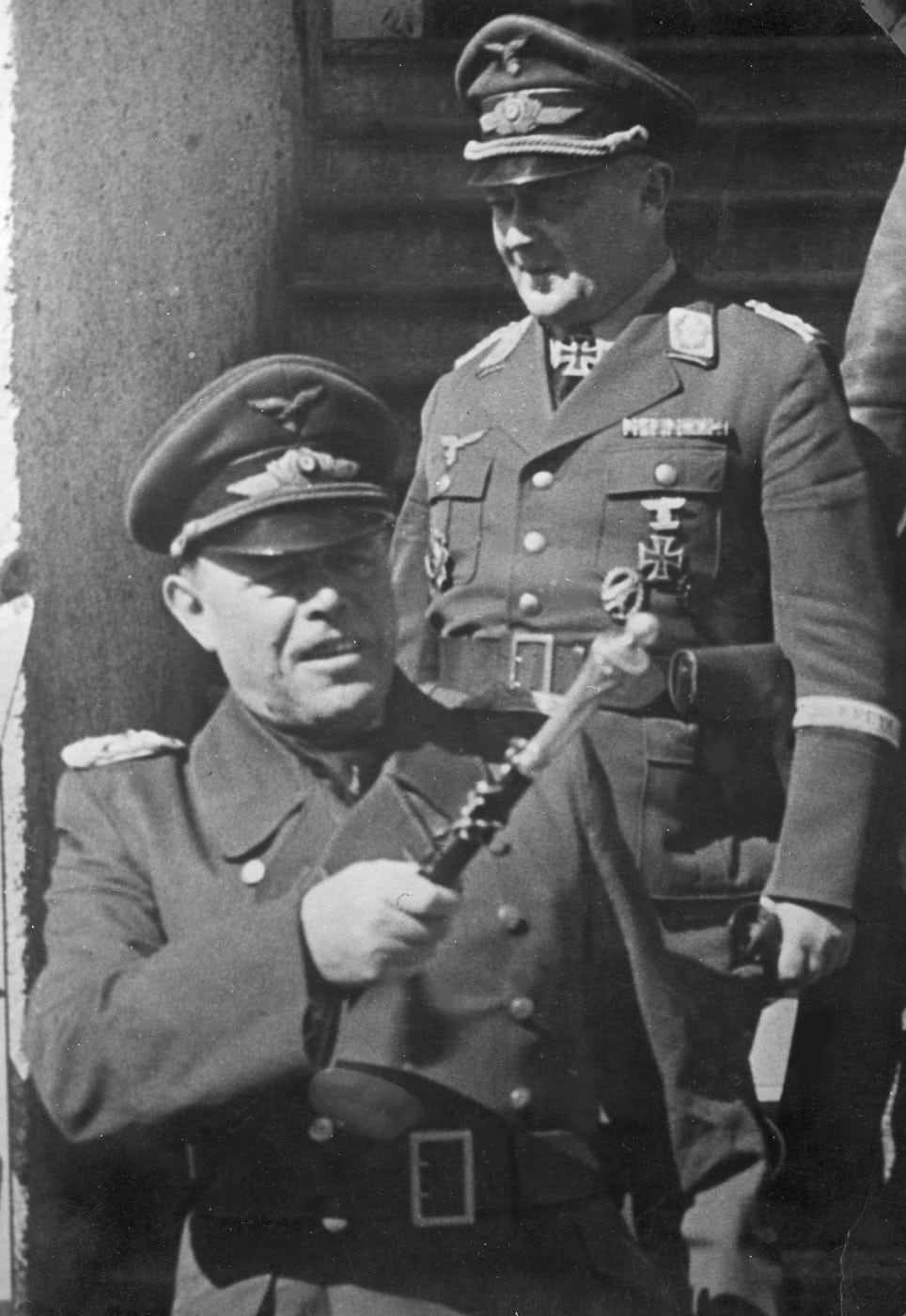
Generalfeldmarschall Albert Kesselring ordered German forces not to use the abbey as a defensive position. Kesselring was also responsible for theArdeatine Massacre. Image: Polish National Digital Archives
The losses were so bad, the attack would later be the subject of a Congressional inquiry.
Abbey of Monte Cassino
Situated above the city was the Abbey of Monte Cassino at 520 meters.
There were conflicting reports about whether the Germans were inside the monastery, using it for cover.
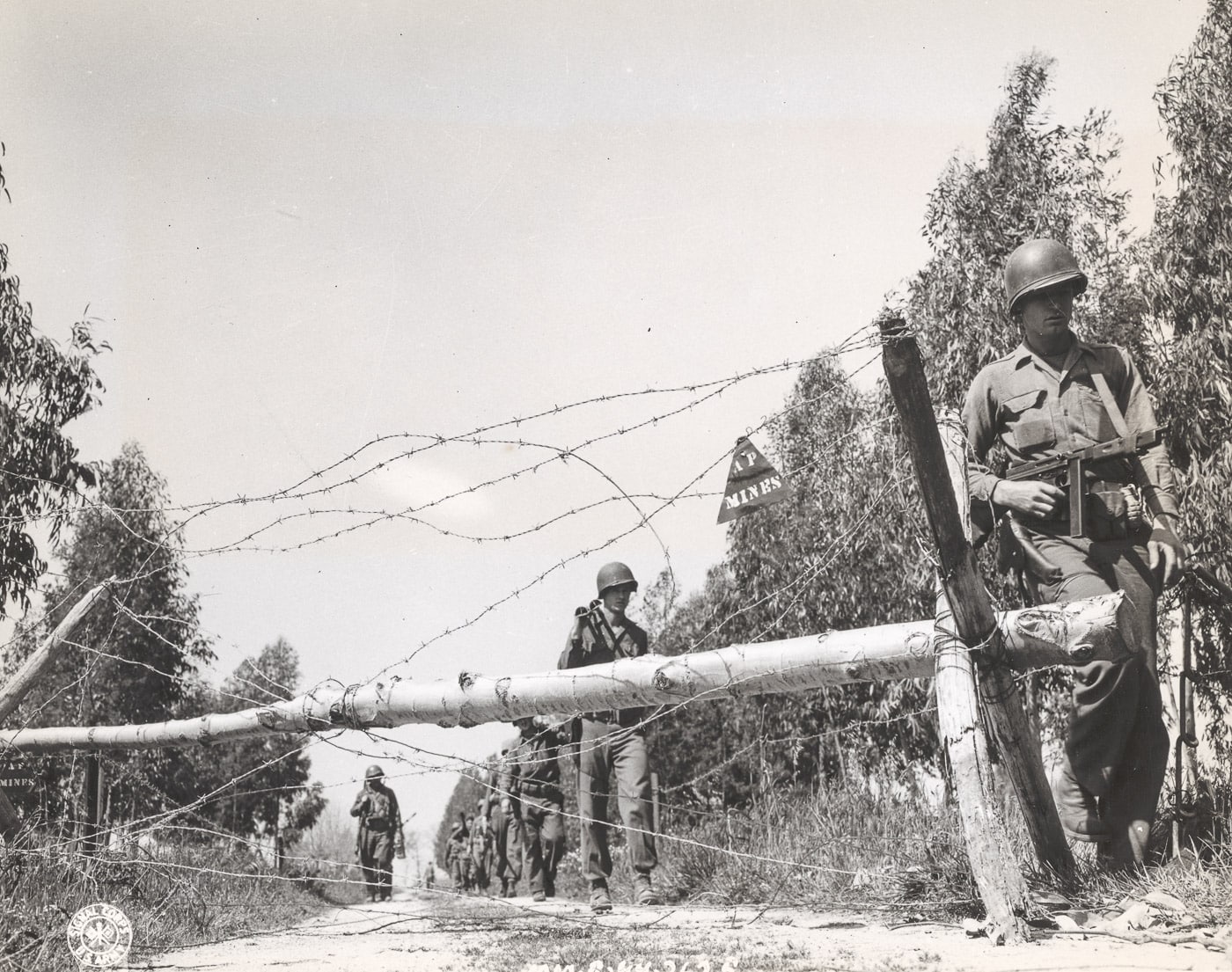
A United States Army patrol moves near the Gustav Line in Italy during early 1944. The soldier on the right carries an M1A1 submachine gun. Image: NARA
Even rumors regarding the location of German troops were believed to be accurate.
The decision to bomb the abbey was made, but is still hotly debated.
Before the bombing, the Allies dropped leaflets with a warning before the attack.
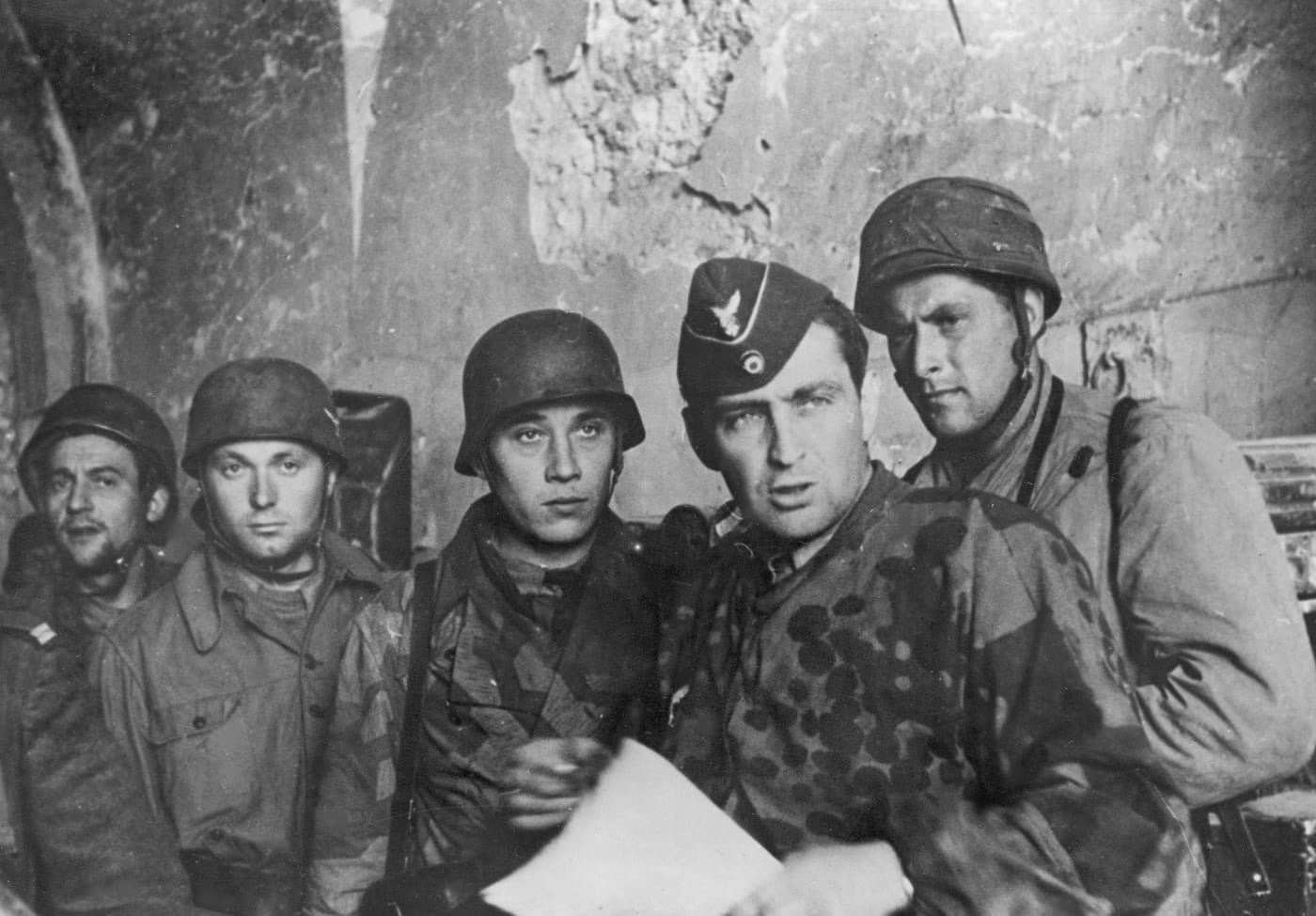
A group of German Fallschirmjäger of the 1st Parachute Corps at the Battle of Monte Cassino. Known as the Green Devils, the paratroopers had a reputation as fierce fighters. Image: Polish National Digital Archives
Italian friends, until this day, we have done everything to avoid bombing the abbey.
But the Germans have taken advantage.
Abandon it at once.
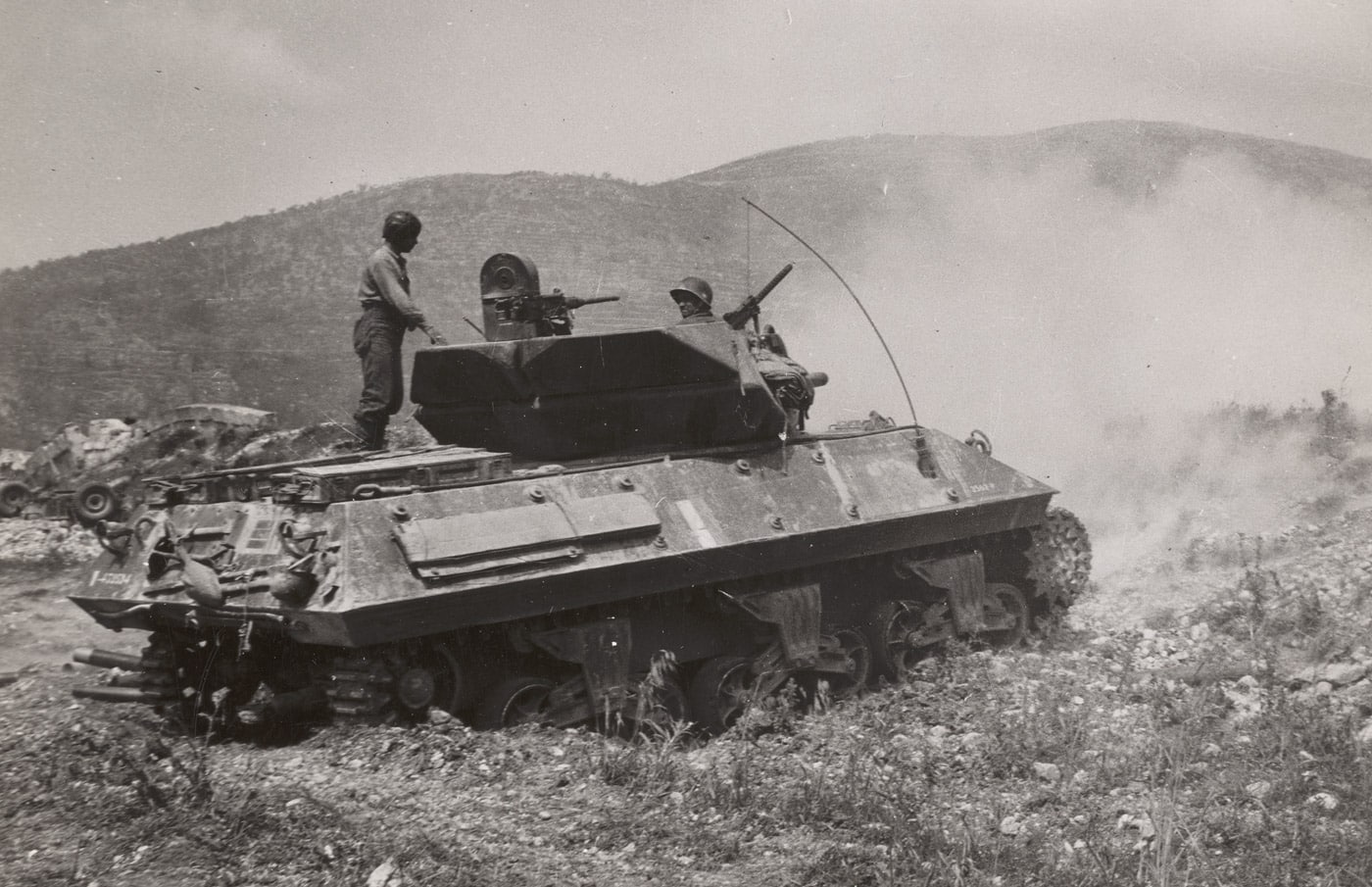
An M10 tank destroyer, manned by the French crew of an Algerian division, fires on a German position in the opening days of the Battle of Monte Cassino. Image: NARA
Put yourselves in a safe place.
Our warning is urgent.
Between bombing runs, artillery from II Corps continued the assault and pounded the summit.
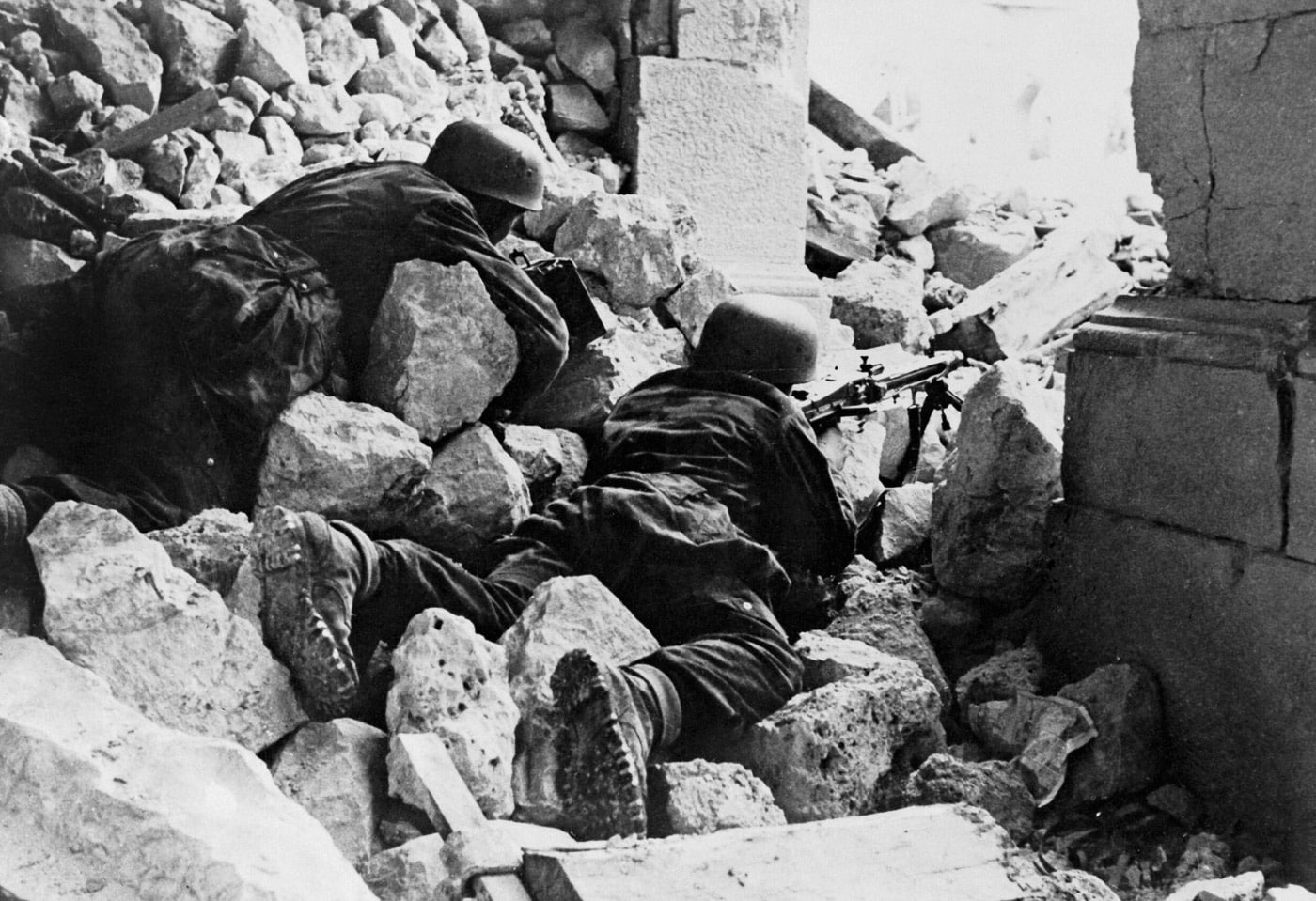
German paratroopers man a machine gun from the ruins of Monte Cassino Abbey. The rubble provided cover and concealment for the defending Fallschirmjäger. Image: IWM
On May 17, The Polish II Corps launched another attack on the abbey.
German artillery and mortar fire battered the Polish troops, and a fierce battle with hand-to-hand combat raged on.
But at what cost?
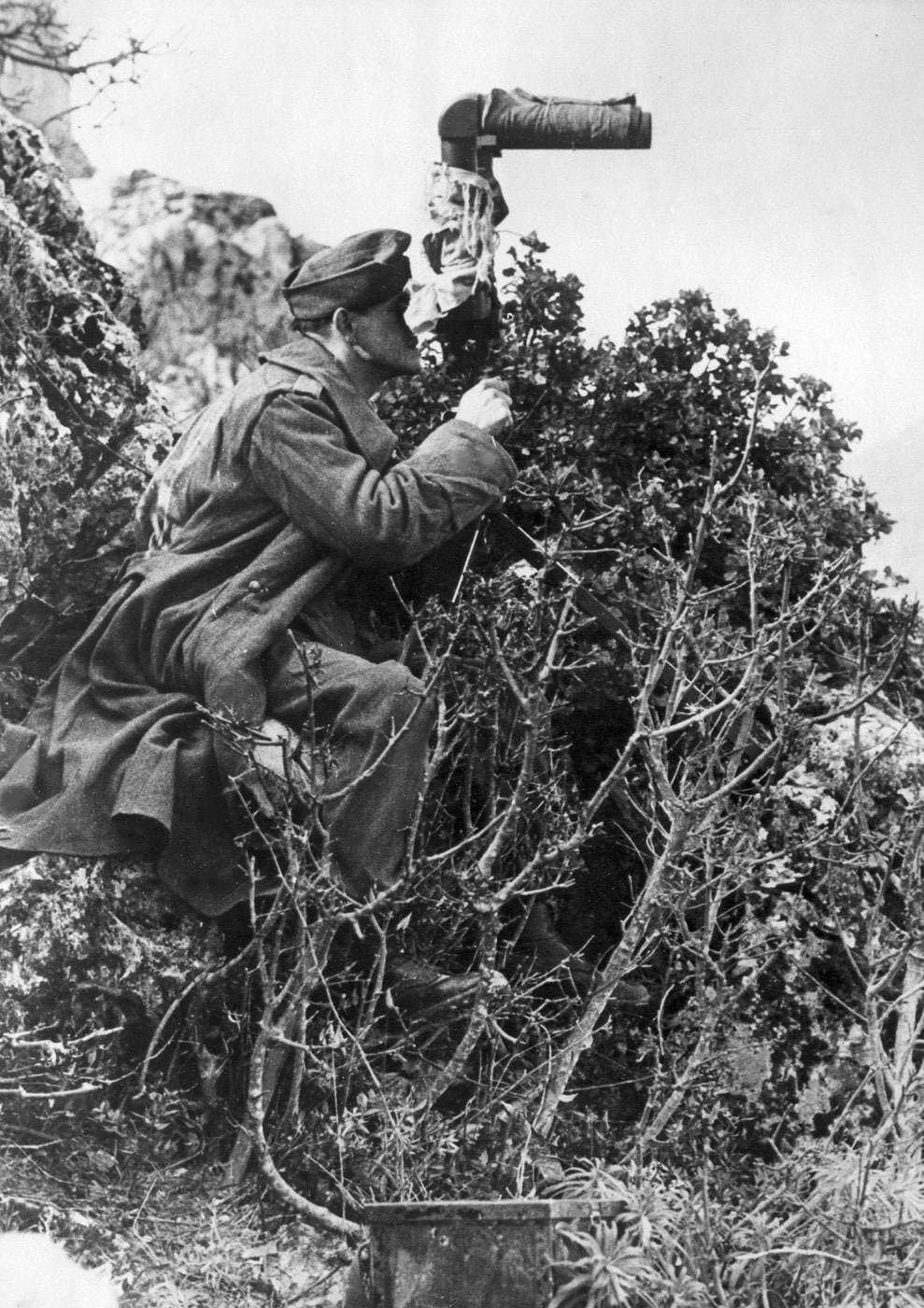
A German observer uses Scherenfernrohr SF14ZGi scissor binoculars, equipped with sun visors and camouflaged with fabric, during the Battle of Monte Cassino. Image: Polish National Digital Archives

The restored entrance of Monte Cassino Abbey, rebuilt after its destruction during the Battle of Monte Cassino in 1944, stands as a testament to resilience and historical preservation.
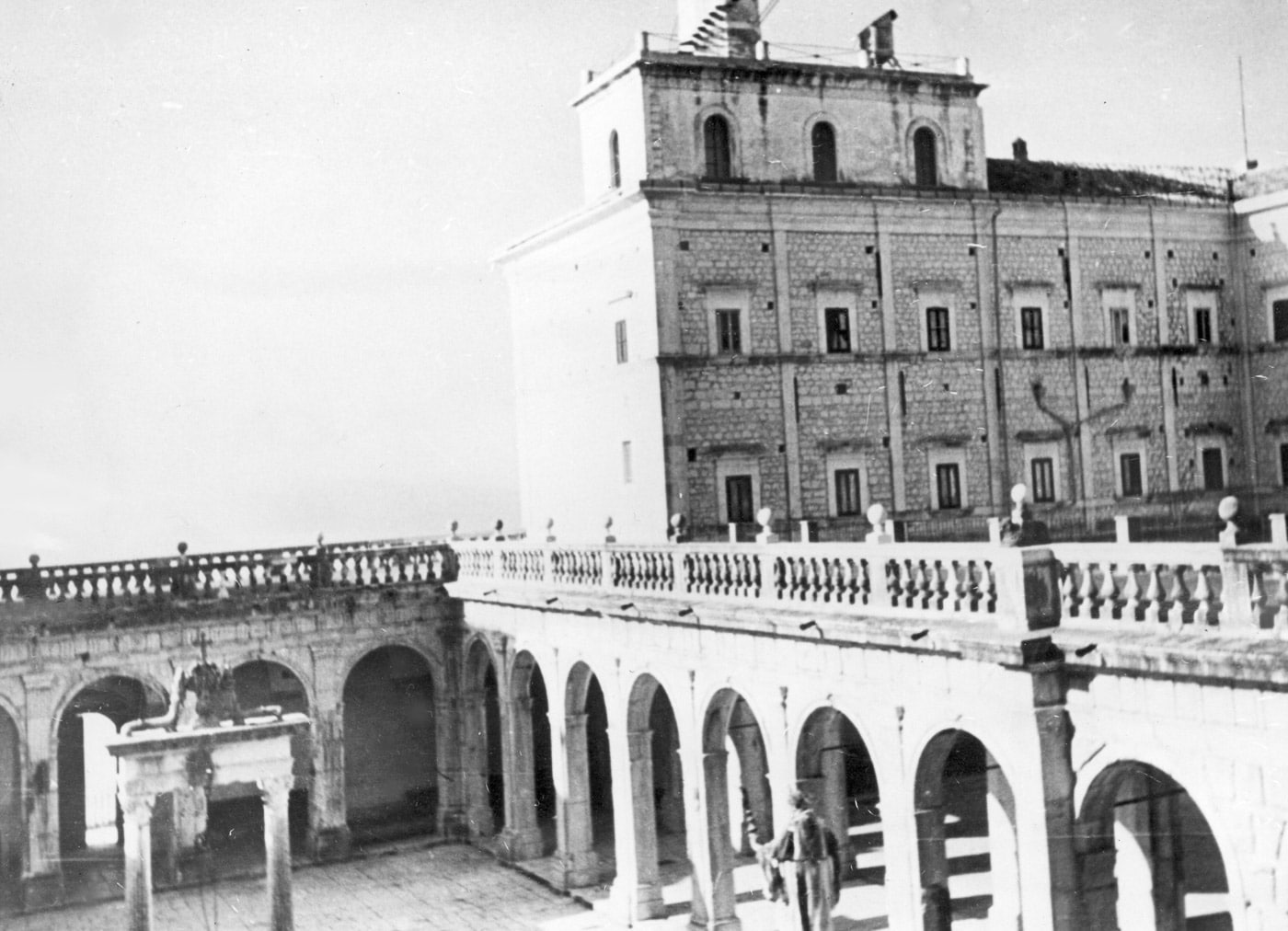
A historic view of the Benedictine Abbey on Monte Cassino Hill, captured before its destruction during the Allied bombing in 1944. Image: Polish National Digital Archives
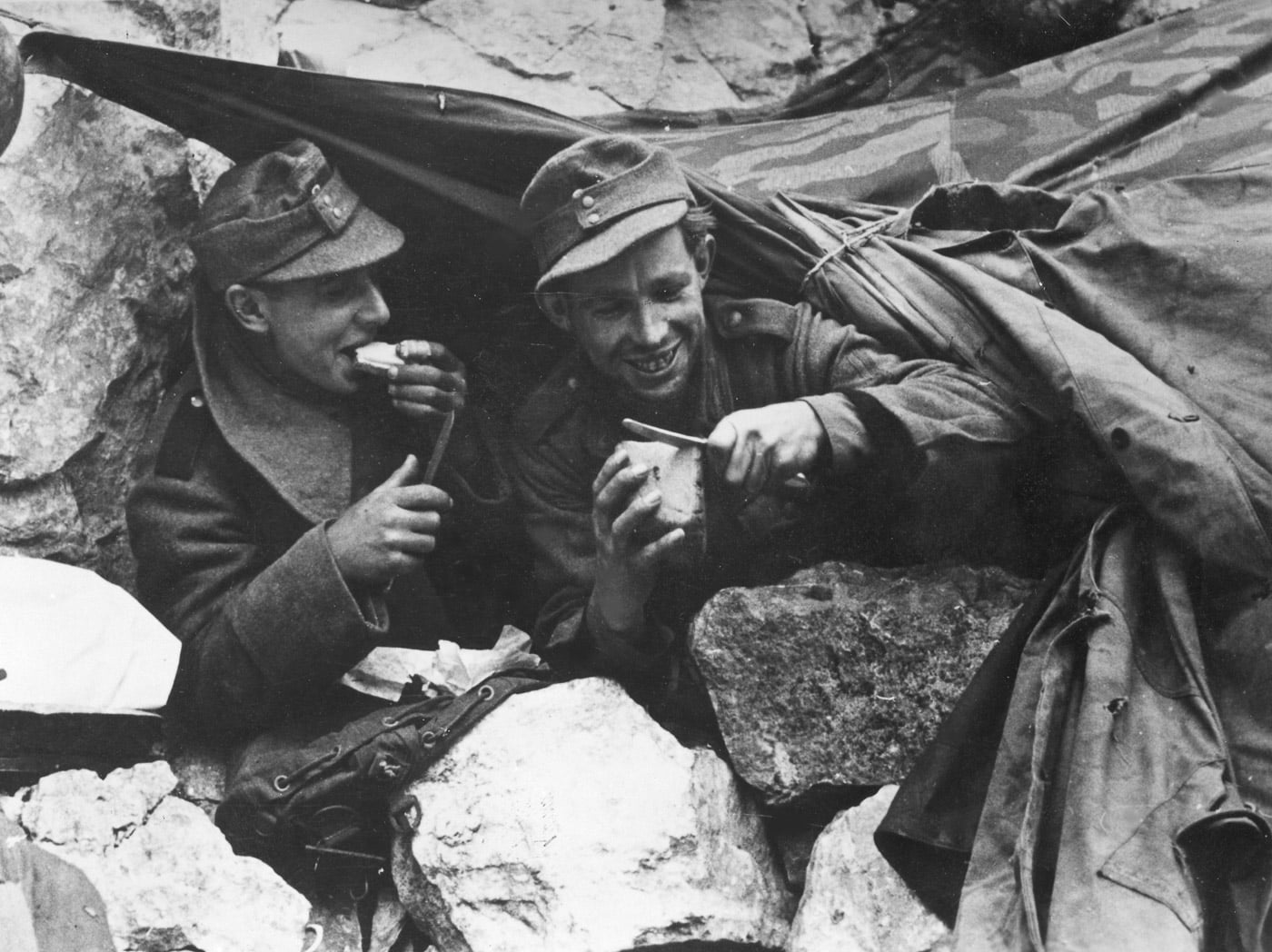
Having constructed a basic shelter among rocks, two German soldiers eat a meal during a pause in the fighting near the abbey. Image: Polish National Digital Archives
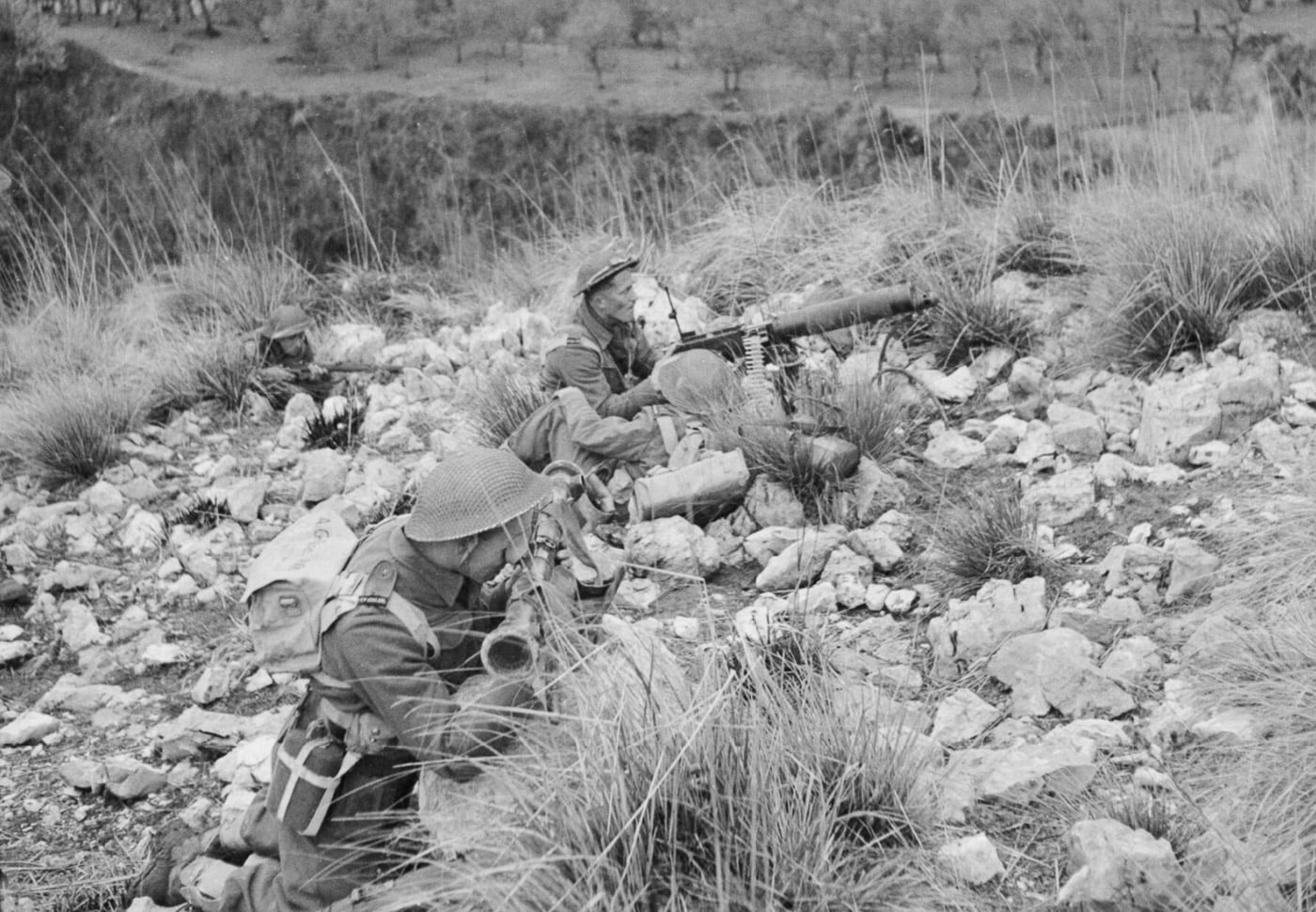
AVickers machine guncrew of the 2nd New Zealand Division in action during attacks on German positions at Monte Cassino. Image: NARA
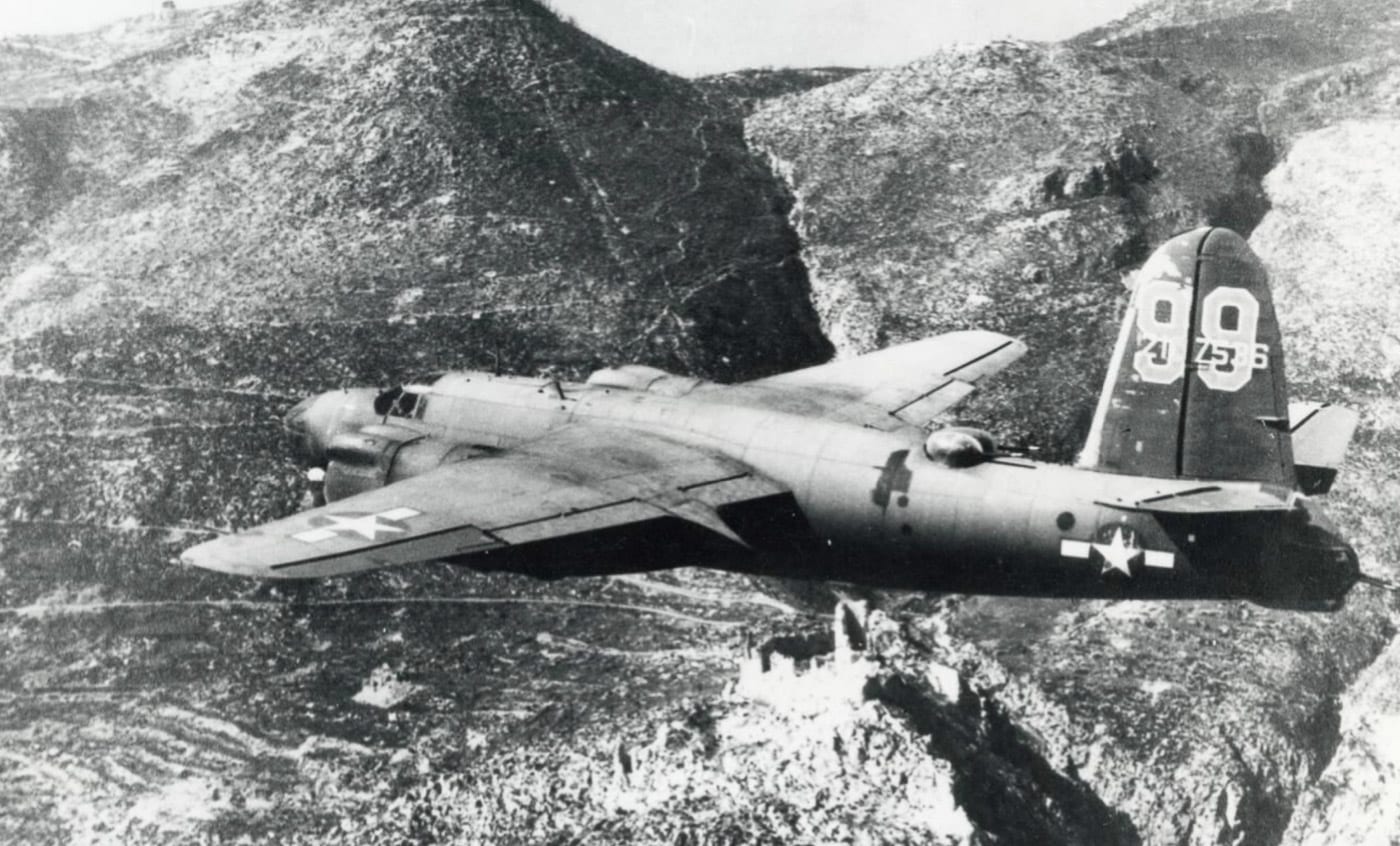
A B-26 Marauder (serial number 42-107536) of the 17th Bomb Group, 12th Air Force in flight past the ruins of Monte Cassino Abbey, 1944. Image: NARA
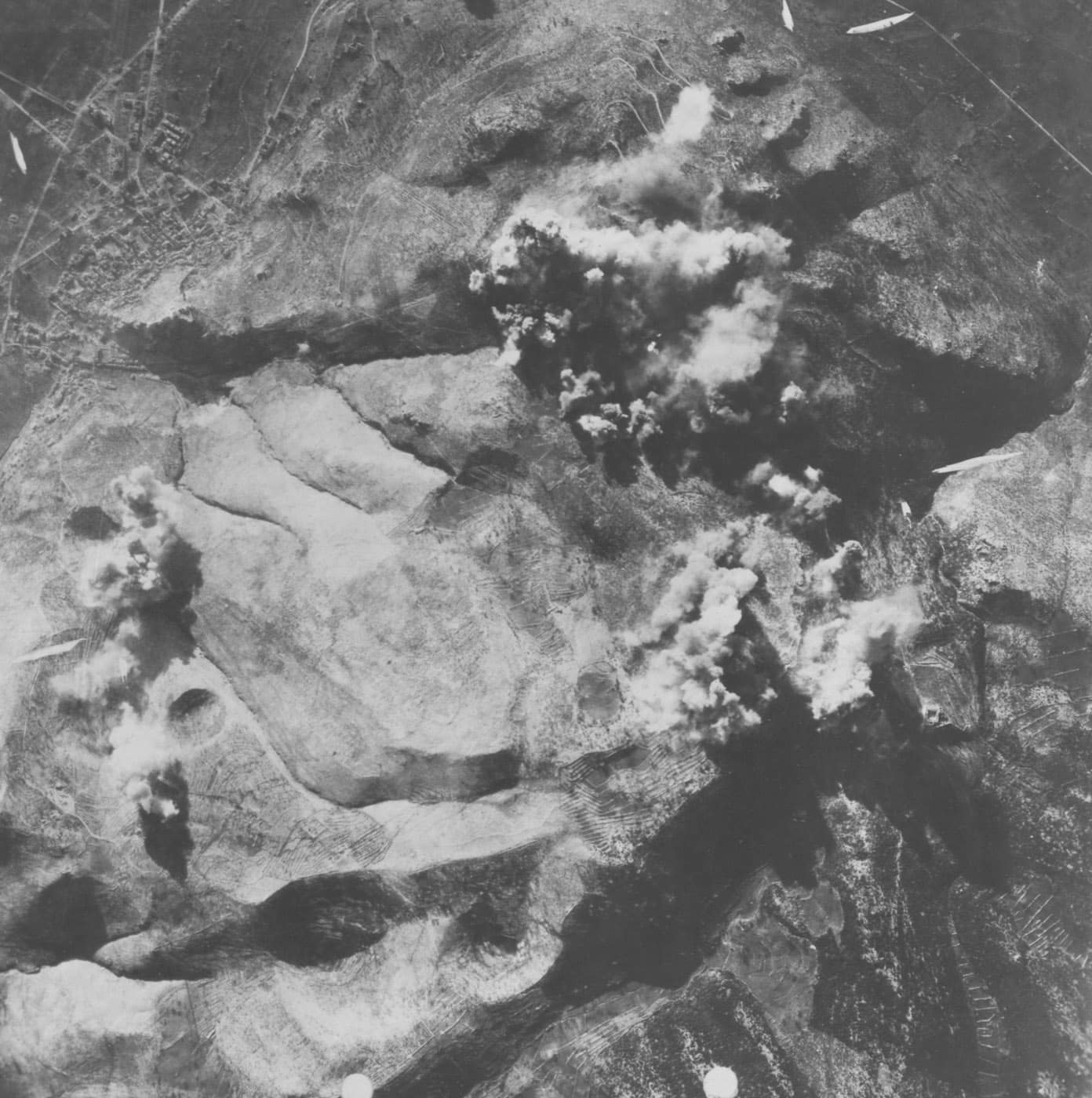
This view of the bombing of the Monte Cassino Abbey shows a large explosion in the east wing. At the time, it was believed to have been German ammunition storage that had been hit. Image: NARA
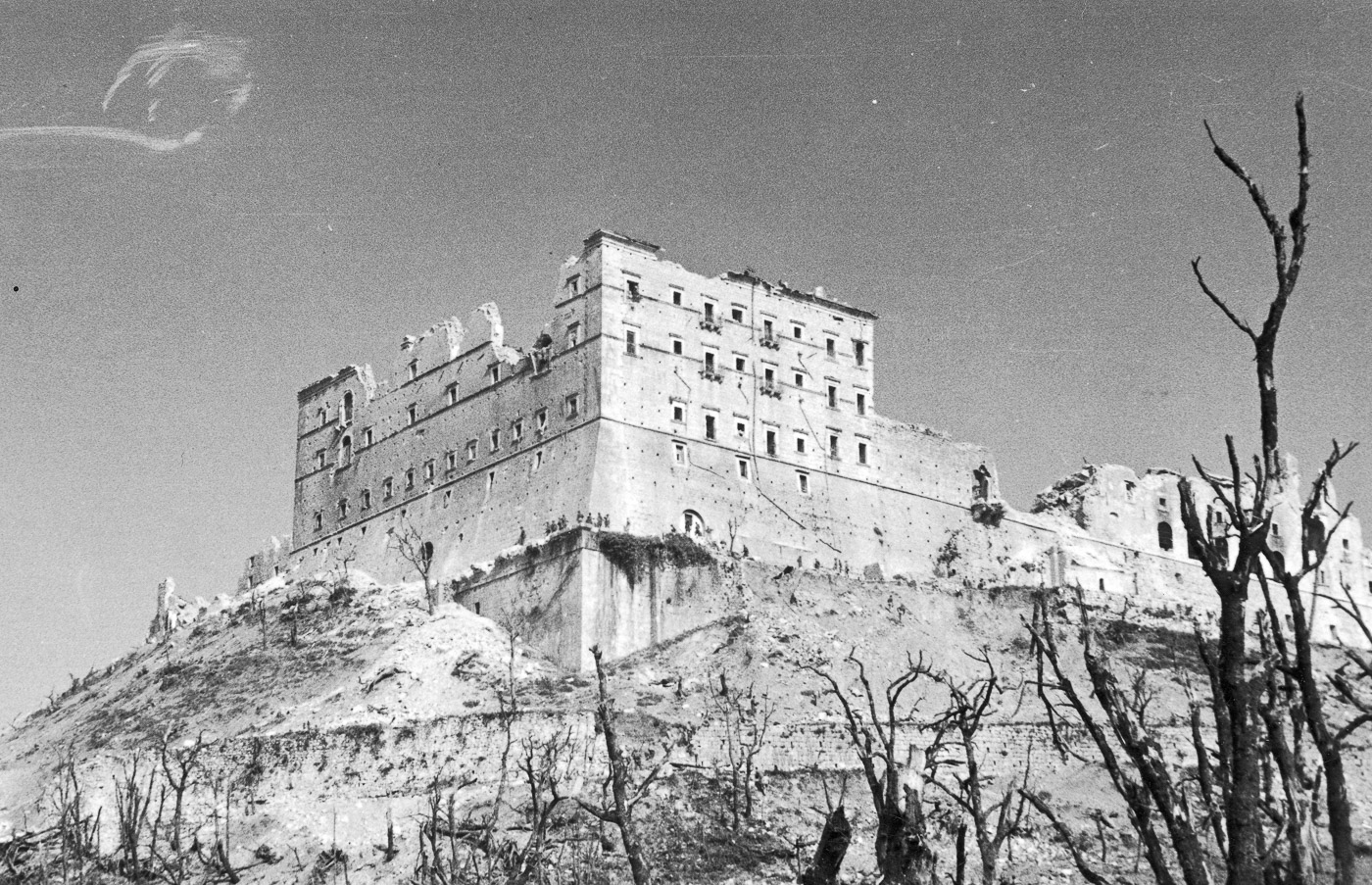
The ruins of the monastery after the fighting ended. While questions remain about the necessity of the abbey’s bombing, there is little doubt about the damage done. Image: Polish National Digital Archives
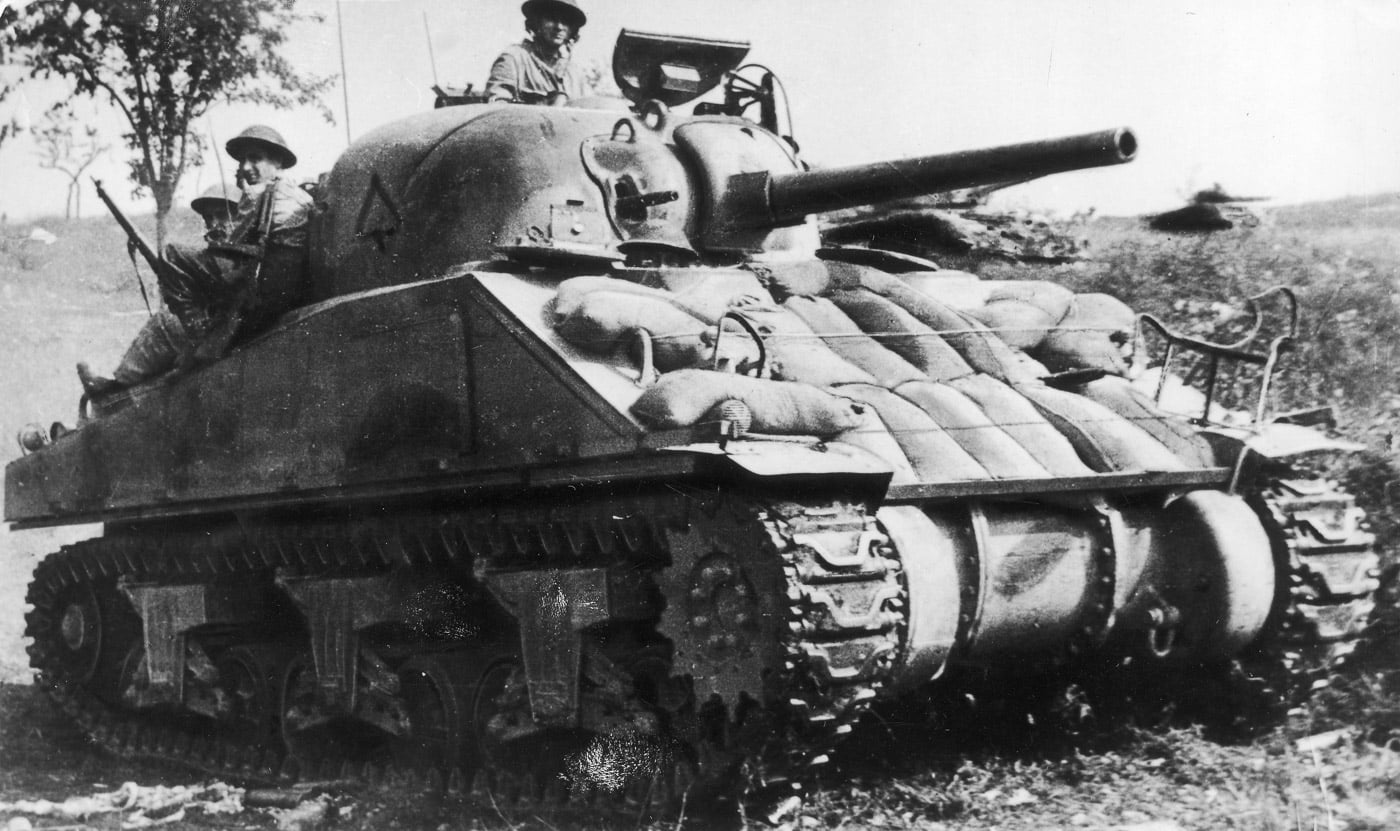
The Independent 2nd Armored Brigade of the 2nd Polish Corps advances during the Battle of Monte Cassino. Sappers catch a ride on this M4 Sherman tank. Image: Polish National Digital Archives
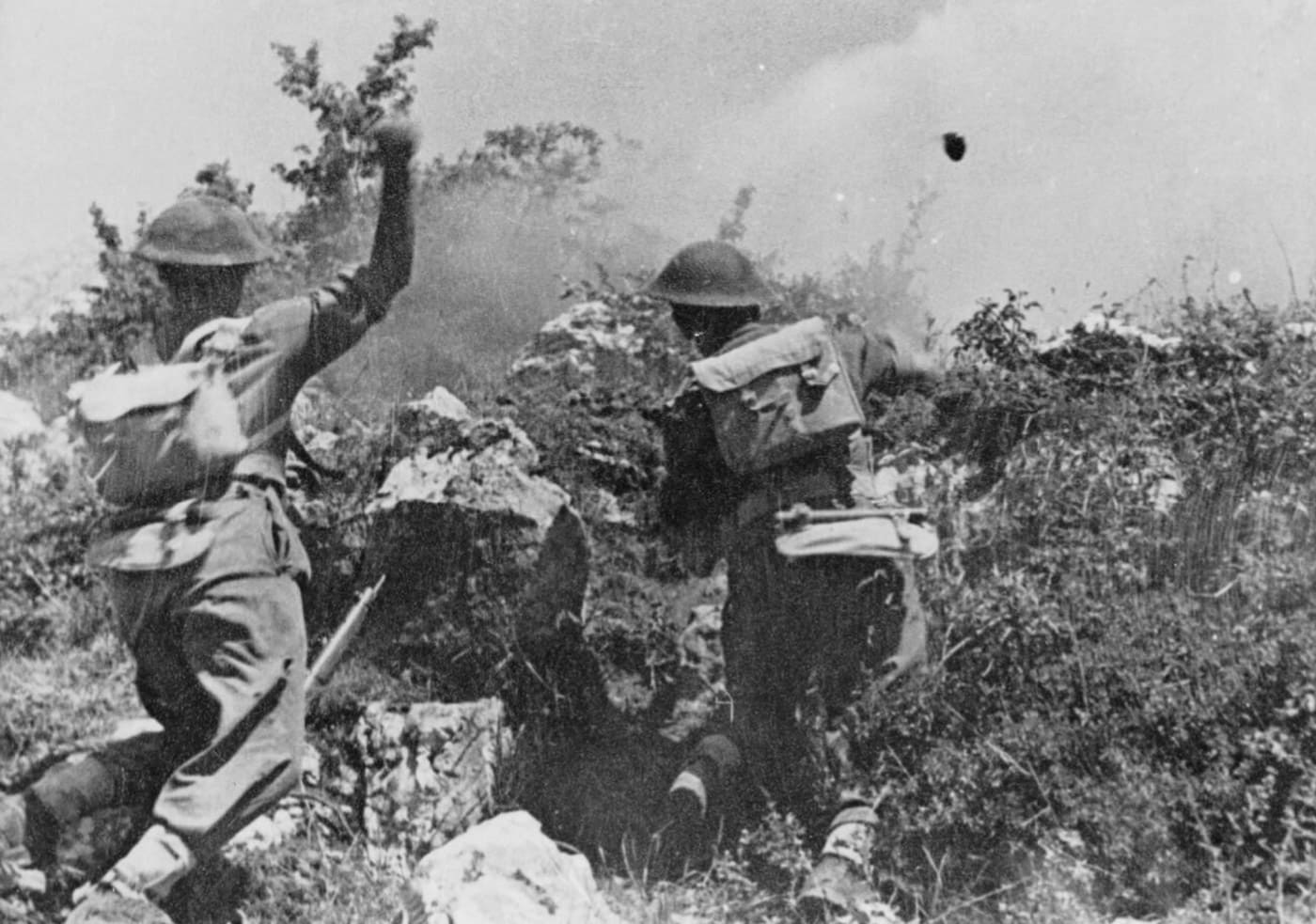
Polish soldiers of the 2nd Polish Corps assault German positions during the Battle of Monte Cassino, using grenades and rifle fire to advance under heavy resistance. Image: Polish National Digital Archives
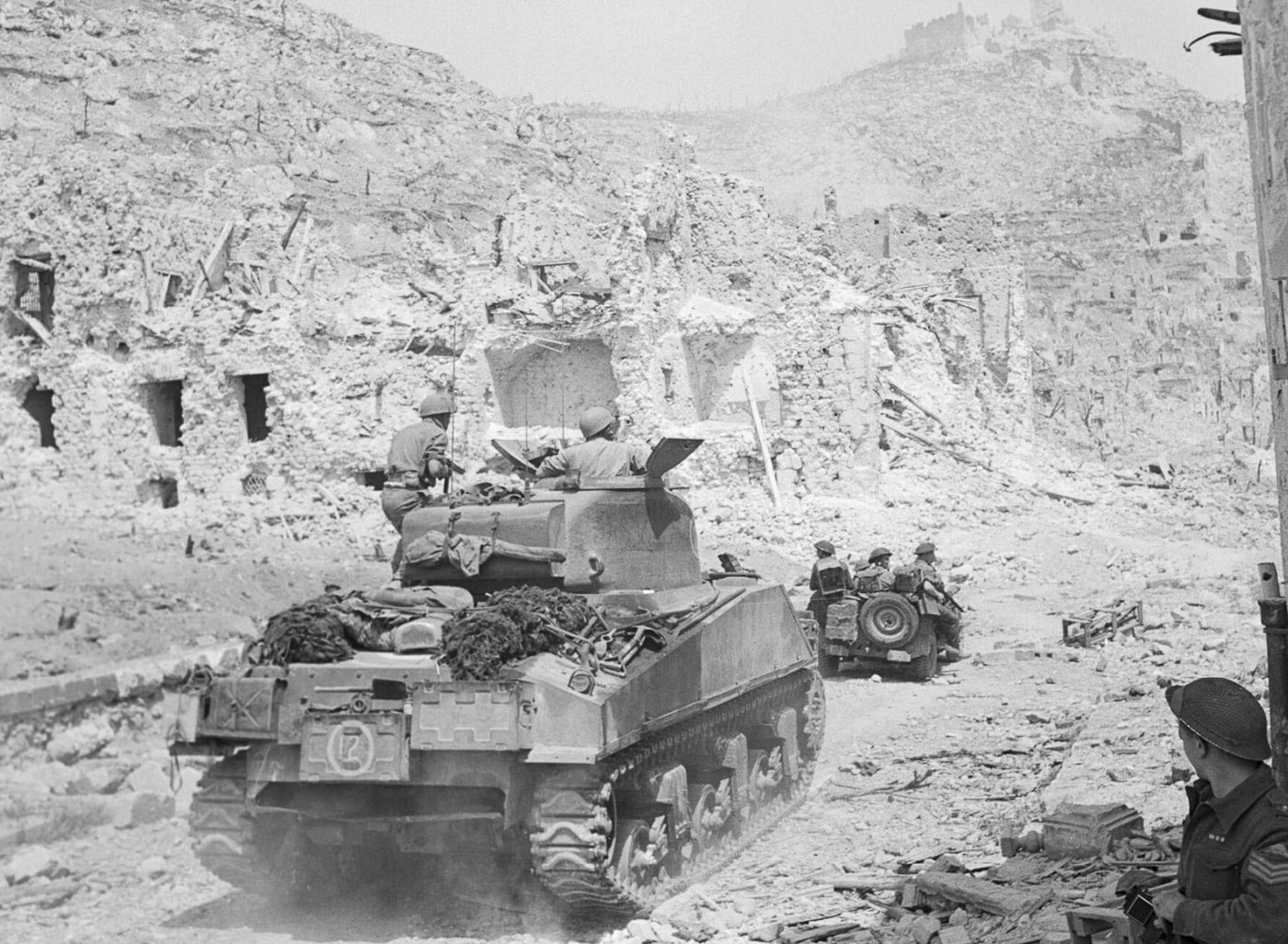
The M4 Sherman tanks of the 4th New Zealand Armoured Brigade enters the ruins of Monte Cassino monastery. The Allied breakthrough of the Gustav Line was key in the Italian Campaign. Image: NARA
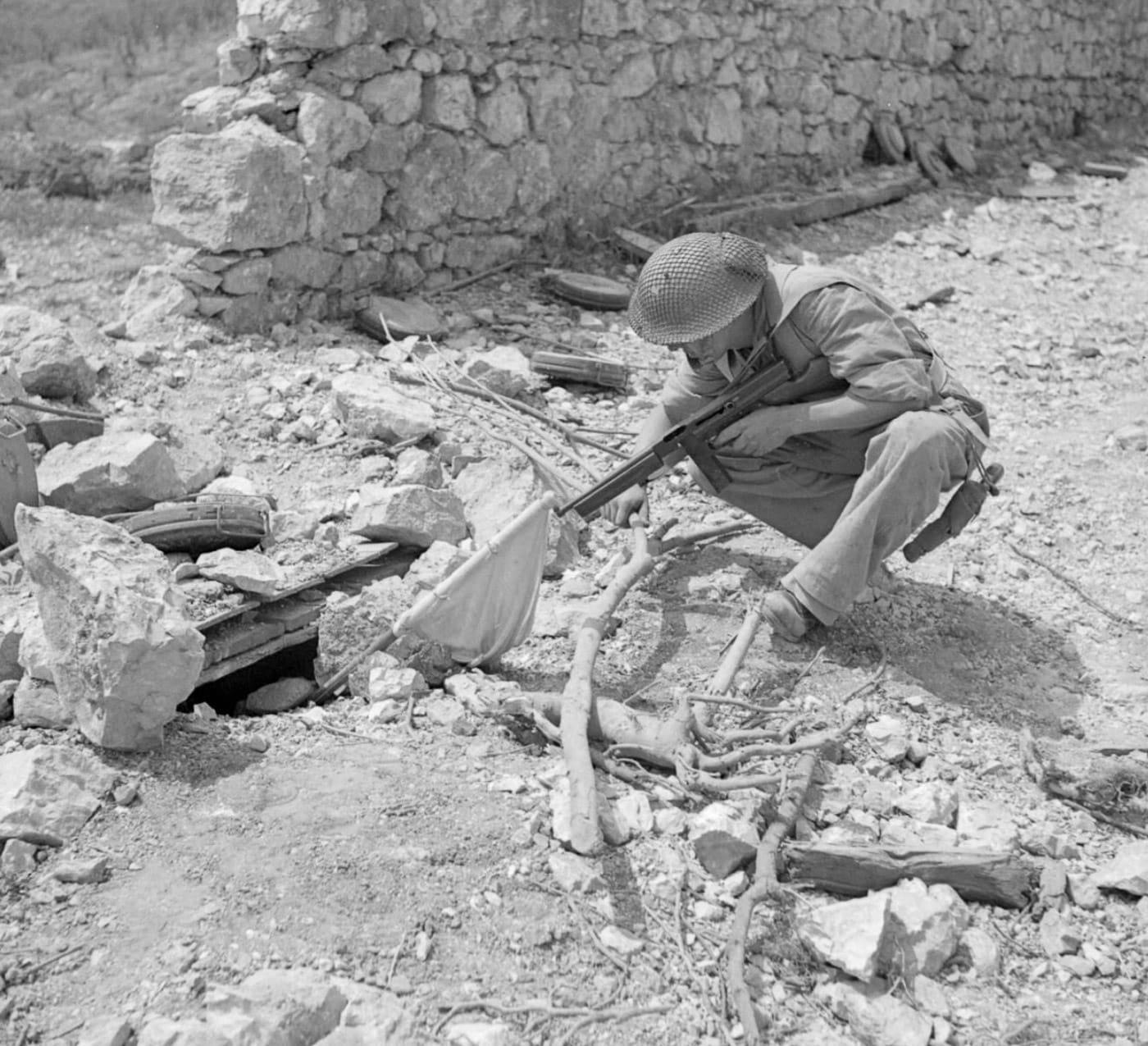
An officer of the Polish 6th Armored Regiment takes a German sniper prisoner during the Battle of Monte Cassino. Image: Polish National Digital Archives
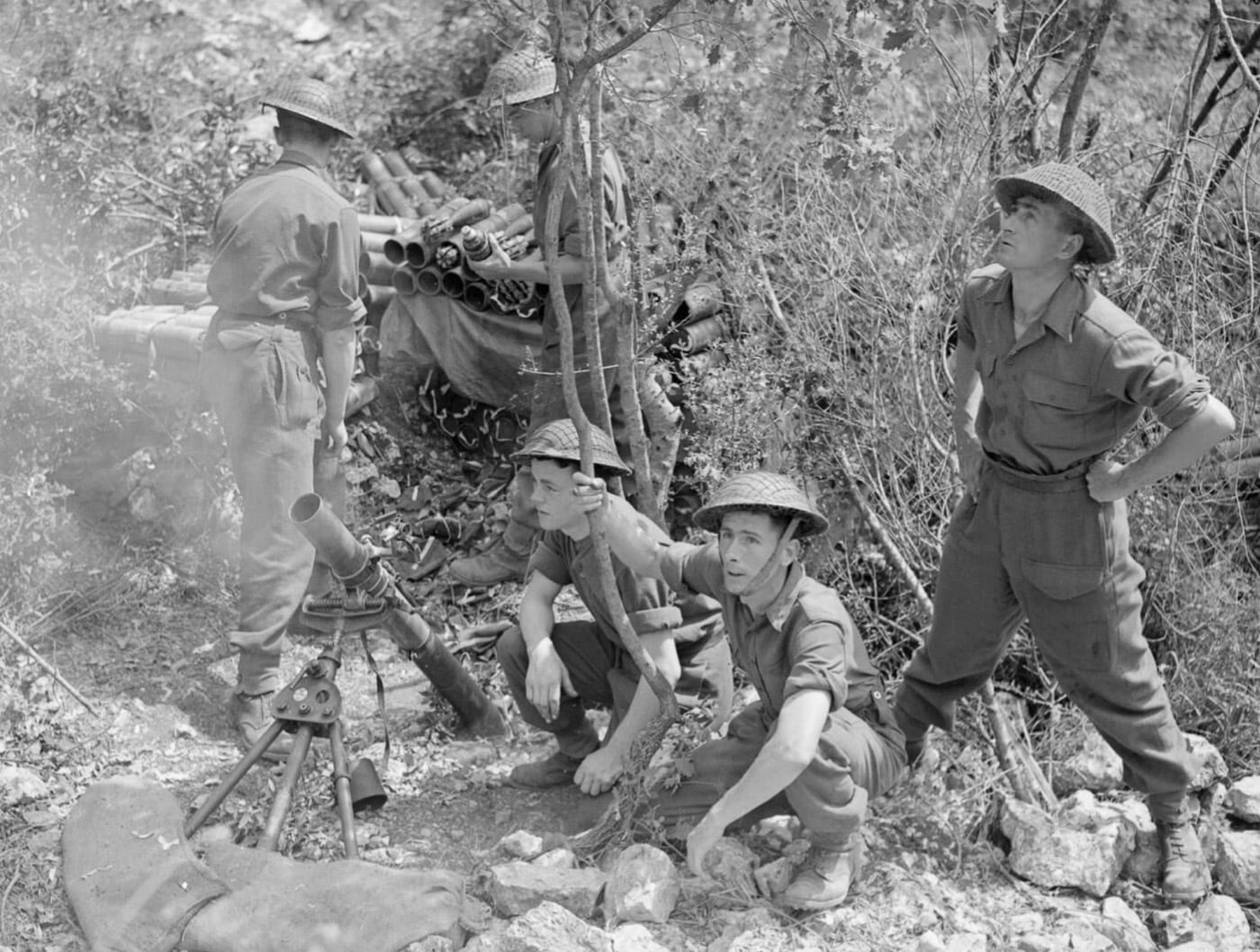
A 3″ mortar crew of No. 2771 Field Squadron RAF Regiment bombard German positions from a ravine. Image: IWM
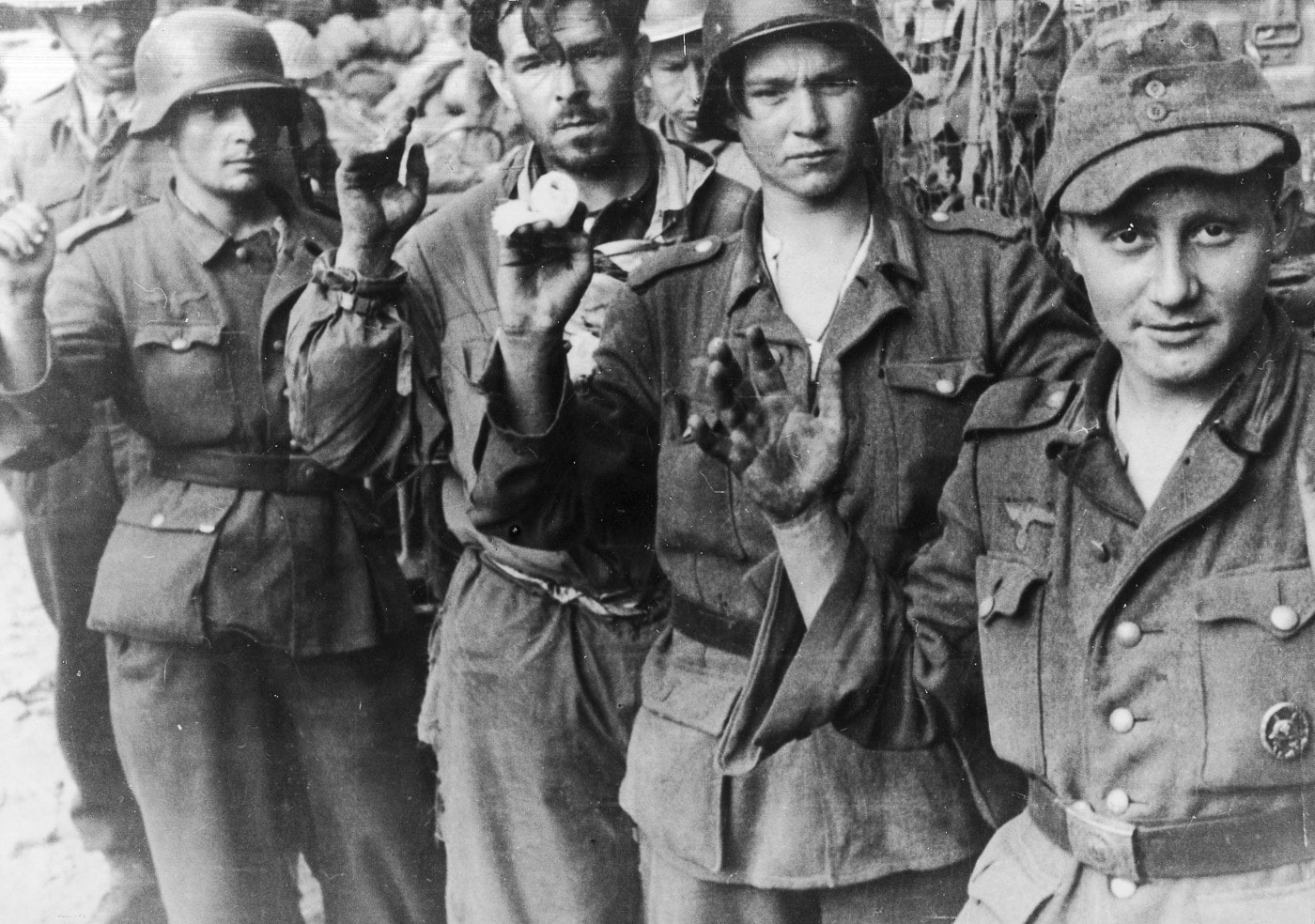
German prisoners of war, captured by Polish soldiers during the Battle of Monte Cassino, stand in a group under Allied supervision. Image: Polish National Digital Archives
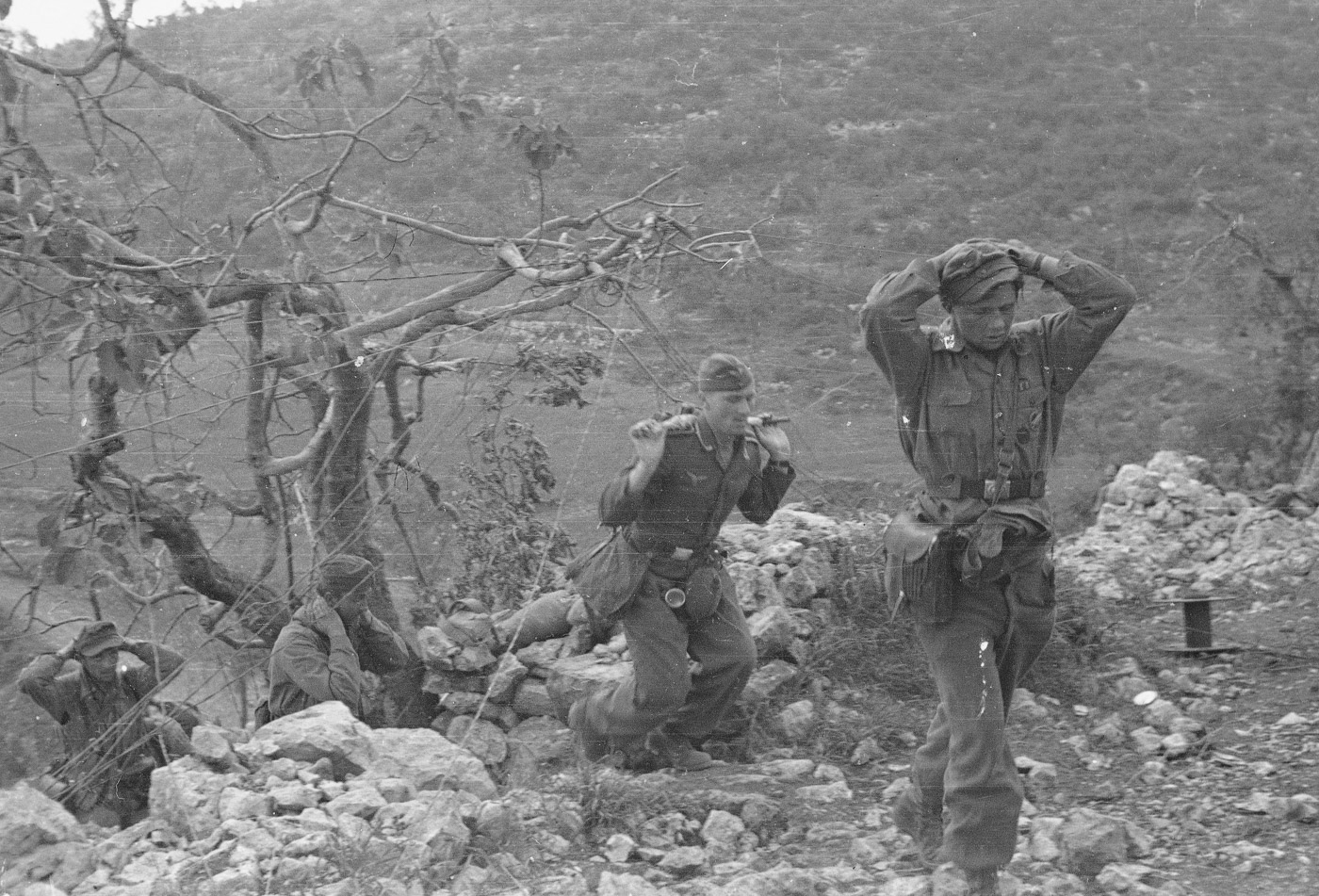
A group of German prisoners walks along a narrow mountain path on their way to captivity. The soldier on the right has a map case and a visible parachutist’s badge. Image: Polish National Digital Archives
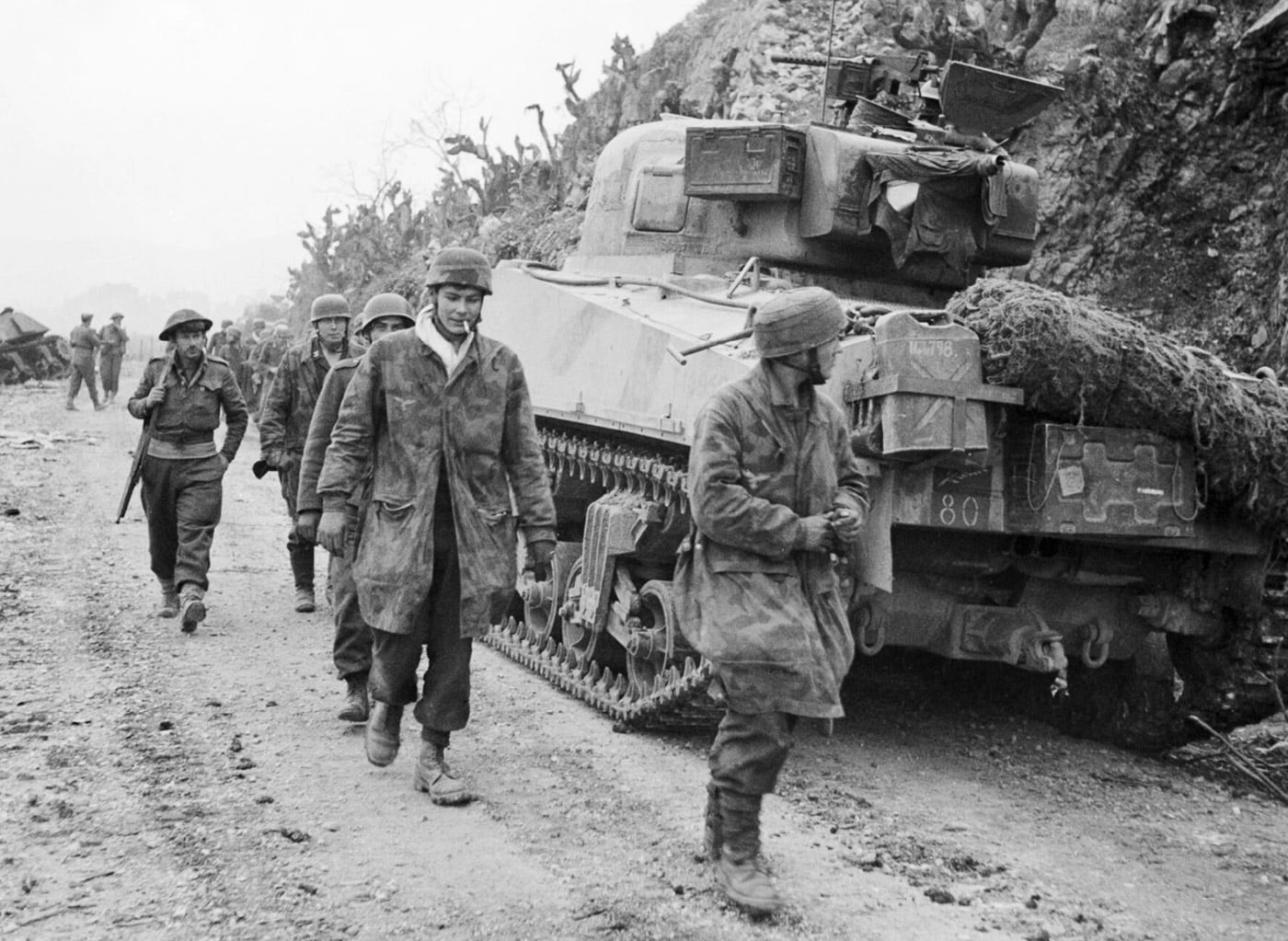
Captured German parachute troops file past an M4 Sherman tank of the New Zealand 4th Armoured Brigade. The Fallschirmjäger were part of the German forces defending the Gustav Line. Image: NARA




